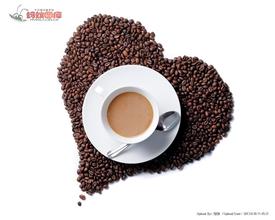Baking method of mocha Columbia-usage of mocha kettle
Process analysis:
Initial heat: after the kettle is heated, the air part expands by heat, resulting in pressure, and the water reaches the powder trough through the aqueduct. After soaking in water, the coffee powder expands rapidly to form pressed powder. At this time, the water in the lower pot is resisted by pressed powder, and the closed pressure in the lower pot continues to increase. The purpose of the first heat is to raise the water level to the position of the powder trough and let the coffee powder form cakes, so there is no need for high pressure and high temperature, as long as the heat is low. If you open the lid of the upper pot to observe, a small amount of coffee will flow out, and then the coffee will no longer flow out.
Pressurization: after the coffee cakes in the powder trough, the pressure in the lower pot begins to increase, turn the fire to medium heat, and let the pressure continue to increase.
Extraction: fire. The pressure of the lower pot is increased to balance with the resistance of the coffee pressed powder, turn on the fire, and let the pressure exceed the critical point of this balance. Under the action of the continuous fire, let the water quickly pass through the coffee pressed powder to get the coffee liquid with complete extraction and balanced taste.
Raise a pot: turn off the fire. Turn off the fire as soon as there is a steam purr in the upper pot of coffee. Then let the coffee pot stand for about 30 seconds. There is a proper distance between the aqueduct of the lower pot and the base of the lower pot, and if you continue to heat, there is still hot water passing through the powder trough, and the extracted coffee has a residual smell of coffee; in addition, if you shake the lower pot, the pressure of the lower pot will increase intermittently, or because the water level of the lower pot is not balanced, there is still water passing through the powder trough. Both reasons cause coffee to be overextracted or overheated.
Taste: remove the coffee pot from the stove. At this time, it is still necessary to rest the coffee pot for about 30 seconds to 1 minute. Because the coffee extraction process goes through three different stages, it needs to be re-homogenized in the static process. After the taste of coffee will no longer have the phenomenon of uneven ups and downs, very soft.
Spare: a set of clean Italian mocha pot, heating tools, filter paper.
Water injection: inject water in the lower seat under the pressure relief valve.
Install the powder cup: no matter how many portions are made, the powder cup should be filled. There should be no coffee powder along the edge of the powder cup to avoid abrading the sealing ring.
Install filter paper: wet filter paper is affixed to the upper seat filter.
Overall installation: pay attention to the need to screw the handle.
Heat: until the coffee liquid flows out, turn to low heat and burn on the side.
Turn off the fire: hear a grunt to turn off the fire.
Stuffy cooking: after turning off the heat, you need to boil until the purr disappears.
Serve: because of its high temperature, it should be covered with porcelain plate at the bottom. Tell customers to beware of burns.
Cleaning: after cooling and reducing pressure with water, the kettle can be disassembled and cleaned.

Important Notice :
前街咖啡 FrontStreet Coffee has moved to new addredd:
FrontStreet Coffee Address: 315,Donghua East Road,GuangZhou
Tel:020 38364473
- Prev

How to beat milk foam? how to beat milk foam manually? what kind of milk electric milk foam machine?
Buy a better milk pump. Although the kettle can also be used to beat milk, professional tools are much better than casual ones; heat the milk to about 65 degrees first, because the heating effect of manual milking is not obvious; the frequency of manual milking should be stable, but not too fast. I haven't really practiced this, but I've tried it several times, probably twice a second.
- Next

Single coffee Name Type Siphon pot Practice Introduction
1. Preparation: a set of siphon pot, coffee cup, coffee spoon, sugar bag and milk ball; 2. Assembly siphon pot; 3. Add water visually: pour nine full parts of water into siphon pot with single coffee cup,(wipe dry lower seat to avoid being burned); 4. Heating: insert upper seat obliquely to observe the condition of chain beads; 5. When chain beads hang water, the water temperature of lower seat is about 80 ℃; 6. Water film has been formed on rubber ring of lower seat.
Related
- What is the Philharmonic pressure? How to use Philharmonic pressure to make delicious coffee
- Why does a hand grinder have more fine powder than an electric grinder?
- In addition to the hot mom, what is the difference between the versions of EK43 | ditting and Mahdi ek43?
- What kind of equipment do you need to make coffee by hand? Introduction to novice starter cooking equipment tools
- Espresso needs to be ground how thick and thin scale entry Italian Coffee Machine Bean Grinder investigation and Grinding course
- How much does it cost to open a small private cafe? How much does it cost to learn coffee? How to operate it?
- The difference between the flavor characteristics of hand-brewed coffee and coffee maker is hand-brewed coffee really better than coffee maker? Can I use a coffee machine to make coffee beans by hand?
- The difference between 01 and 02 of hario v60 filter cup what is the difference between 01 and 02 filter cup opening and cooking flavor
- What's the difference between the smart cup and the French kettle? Which is better, the French kettle or the Smart Cup?
- What's the difference between a smart cup and a V60 filter cup? The difference between the taste of smart cup and hand-brewed coffee

